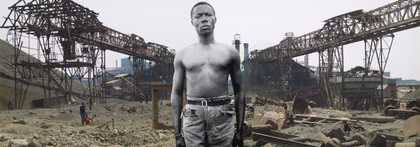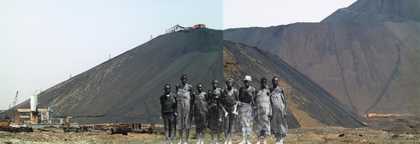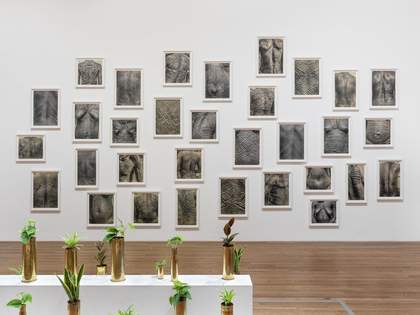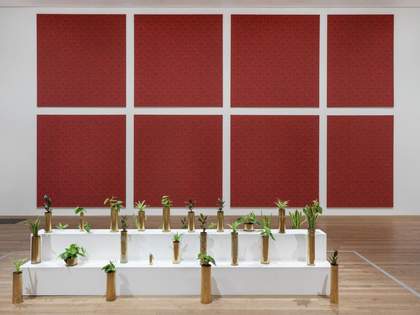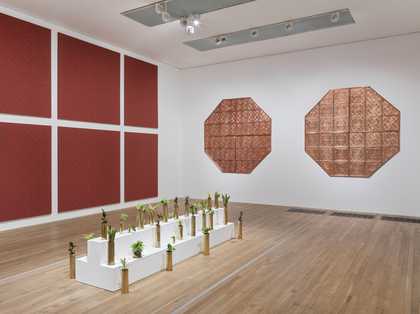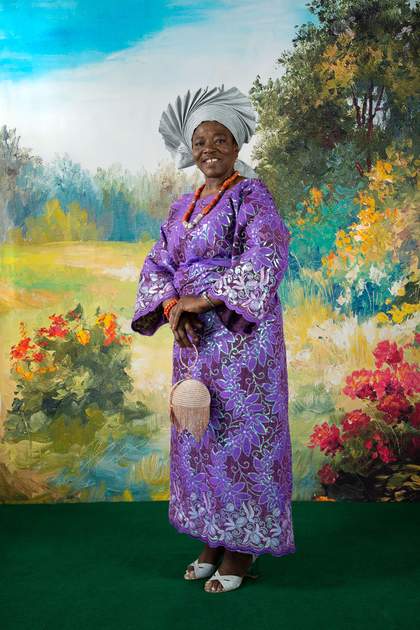[Swahili] Hello, my name is Sammy Baloji.
[English] I'm from Congo DRC, I was born in Lubumbashi and since 2010 [French] I live in Brussels where I work looking at tangible and intangible aspects of Congolese culture during the pre-colonial, colonial and post-colonial periods.
[English] I didn't learn about the colonial period in school in Congo and some of the archives were destroyed during all these wars that happened from the 60s until now. So when I started to work as a photographer I wanted to document and to have also a personal collection that I could use in order to create my artwork.
This is a landscape, it's an interesting one. This is beautiful, it's like a river. Congo became a Belgian colony from 1808 until 1960. The cities that we have in Congo were built during the colonial period, the city as an urban planning as a space of living was imposed. Katanga became independent because the Belgians and the mining company wanted to keep control of the minerals.
We went to one of the mining offices and we asked if we could get access to archives related to the mining company. These images became like testimonies and witnesses of what happened during the colonial time and this was also a way for me to discover all this violence. I worked actually with those photographs in the series called Mémoire, where I did this photomontage using archival material with contemporary photographs taken by me in these mining sites and bringing them together in a new narrative that comes also with emotions, with ruptures, with amnesia in the collective mind.
Photography arrived in Congo or even in Africa through colonial expeditions and the photography helped a lot to create this image of ‘the other’ or ‘the savage’ or ‘the foreigner’ or something like that. I wonder myself as an African or as a Congolese how am I able to kind of produce a new narrative with the same medium? Making 802, what I thought to do as an installation was to create a kind of showroom. It's like going in the shop and buying something, then you have catalogues of wallpapers, catalogues of ceilings, shelves and plants with a plinth in a way. But all these elements are based on the colonial extractions and racial issues.
Copper it's a bridge between the pre-colonial, colonial and the post-colonial and so then it's interesting to inscribe all these kind of traces of cultural and knowledge production. So this is why I basically started to collect these bombshells. What I thought was okay, it's very interesting to connect these plants this domestication of minerals, domestication of countries, domestication of you know lives and so you know minerals and plants and this is why we have this installation.
The Congo Pavilion was intended to be shown and built in 1935, for the World Exhibitions or the World Fairs that were happening in Europe. It was a Belgian architect who proposed to recreate in the pavilion different climates from Congo, but also adding to those climates types of vegetations and also showing villages with Indigenous people who are located in those climate zones to be living in the pavilion. The architect is Henri Lacoste but his project was not selected, the title it’s like pavillon atmosphérique so it's an atmospheric pavilion. It's a place where you can feel smell, see, touch, you know so you have all these elements through technology and architecture. So there was a way to recreate a small version of Congo in a World Exhibition Pavilion with this idea of controlling the climate, the vegetation, people and the soil. Having in mind that actually we're talking about the climate crisis and I think it's kind of interesting to connect it to the colonial system, because it all started there. When it comes to the Anthropocene era and we are talking about how the human activity has influenced the climate where we are, so and most of these activities have happened in colonies. The white cube it's not a neutral zone, it's a political one in a way, so it's important to reveal those stories.


